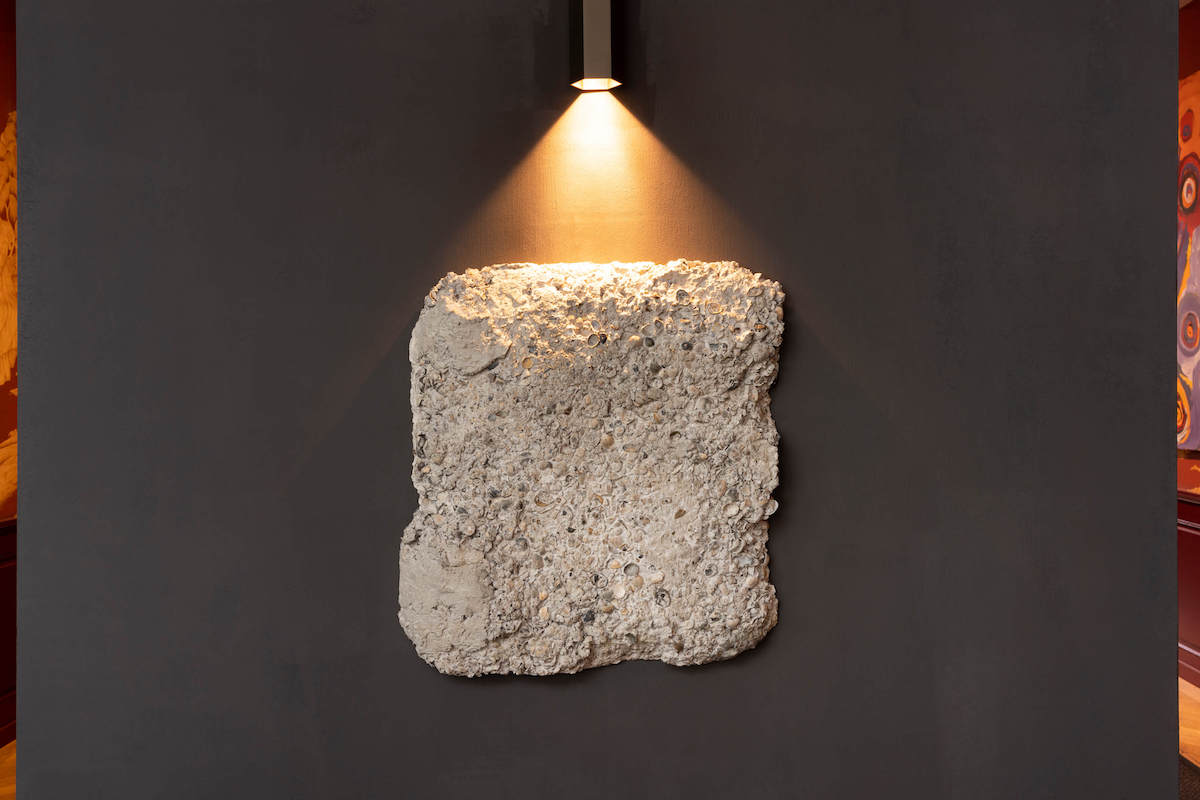
Nina Canell - 2022
Hardscapes (0,033 Tonnes)
The marine past of industrial concrete can be traced back through its inexhaustible demand for calcite deposits in sedimentary limestone. At once prehistoric and proto-industrial, two sculptures comprised of concrete mixing vessels have been stackedinto large segmented pillars, invoking tumbling as much as the tumbled. Concretebinds much of the built environment, whereas its loose non-adhering aggregates – sand, silt, gravel, mud, scree – are unstable. They impart a sense of ruin: of abandonedwalls and roofless structures, a sense of elsewhen, where time and its material scaffoldcrumbles and leaks back into the world, returning to the weather. In the mineral realmtumbling through uncertain ground is the condition in which to move through the world – slow, granular and eternally open-ended – a steady shattering of linear time.
For Swedish artist Nina Canell (1979, Sweden) the nature of process is the material of her practice. Grounded as much in the chance encounter as in close study, her work ischaracterised by a syntax of relations and transfers, whereby material forms and immaterial forces are placed in proximity, facilitating dynamic relations to emerge and sculpture as an agency to take form. The negotiation and displacement of energy has been an integral preoccupation in her work since the very beginning. Thinkingbeyond the tangibility of sculpture, she sees it not only as something that is groundedin material and objects, but more as a host that might act as a conduit for externalevents.
For Canell, sculpture is a condition; one that is highly sensitive to spatio-temporalvariables. The environment in which her sculptures are placed determines the temperature, atmosphere and transformation of objects – just as they in turn shapewhat is around them.



